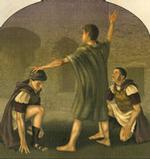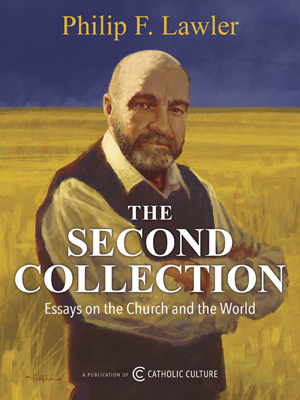Just as you suspected, most polls are useless.
By Dr. Jeff Mirus ( bio - articles - email ) | Aug 26, 2015
It is now safe to discount the results of almost any major poll which relies on user responses to polling questions. And if polling companies use other kinds of adjustments to attempt to make their data more correct, then there is much more than mere polling at work.
Robert Wuthnow is a sociologist at Princeton, an expert on polling, and author of Inventing American Religion: Polls, Surveys, and the Tenuous Quest for a Nation's Faith. In the August/September issue of First Things (see In Polls We Trust), Wuthnow explains that major polls were developed in the United States by George Gallup in the 1930s, and polling has since become a billion-dollar-a-year industry.
The only problem is that people are now so sick of endless polls that only a very small percentage will bother to let themselves be polled. In the 1980s the typical response rate was about 70%. By the 1990s it had fallen to 33%. Today, response rates are at about 10%. Also in the 1980s, 80% of respondents expressed confidence in the accuracy of polls, but by 2006 the confidence level had dropped to 34%—the same level of trust as we have in politicians. (Sometimes stringent academic polls—with careful questions, subject to peer review, and spanning several years—can be used to check the more slap-dash results of the major polling companies.)
The problem is least noticeable in political polls, and most noticeable in polls that attempt to measure spiritual commitments, such as the state of religion. Since pollsters are judged by their success at predicting political results, polling companies typically use other kinds of knowledge to adjust their political polls to reflect likely outcomes. These predictions are also easily corroborated or corrected by actual events, which leads to improvements in the overall model of analysis.
But this strays pretty far from true polling and there are no such gimmicks and correctives available for religious projections. Also, people are even less willing to talk about religion with pollsters. Religious commitment is typically intensely personal and respondents know that the pollsters have little idea of what they are actually asking about. For example, using careful academic surveys where available, Wuthnow reports that the common polling estimate of 90 to 100 million weekly churchgoers in the United States is almost certainly off by about 30 million!
The pollsters, of course, blame the respondents. But either way, the level of accuracy in religious polling is widely known to be low enough to make the exercise essentially useless. The problem is exacerbated in all fields by the need of the polling companies to use their results to create spicy headlines, headlines which will indicate a certain daring while catering to the national mood.
Polling, in short, has become rapidly less useful over the last generation. Particularly in sensitive areas, the results are impossible to trust. Of course, committed Catholics have long complained about sociological reductionism—the attempt to reduce the workings of grace to sociological indicators. This is the kind of thing that has led religious dissidents to use polls to explain what the Church really ought to teach, based on the public’s willingness to accept the teaching.
By now, however, we’re just about ready to dismiss the whole nuisance of polling altogether, and for very good reasons. Perhaps it is time to get back to evangelizing real people rather than worrying about highly uncertain “social trends”.
All comments are moderated. To lighten our editing burden, only current donors are allowed to Sound Off. If you are a current donor, log in to see the comment form; otherwise please support our work, and Sound Off!








